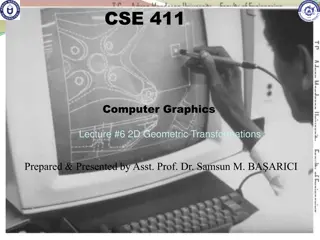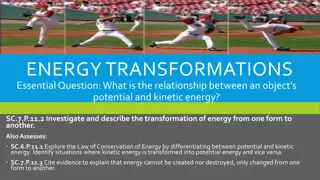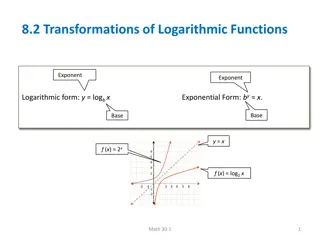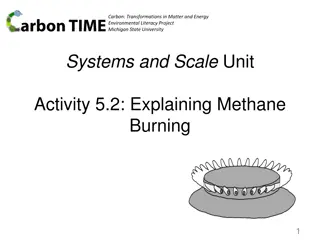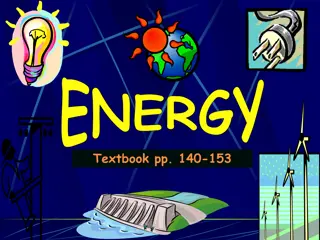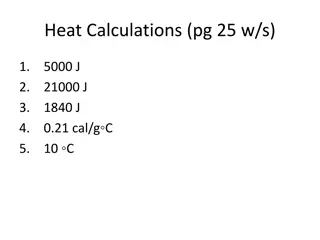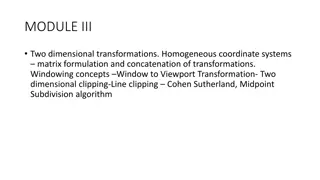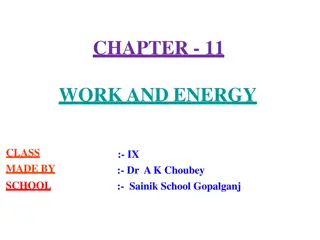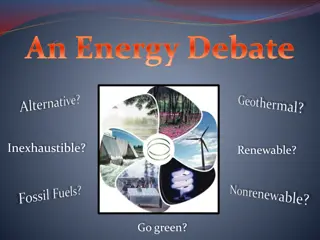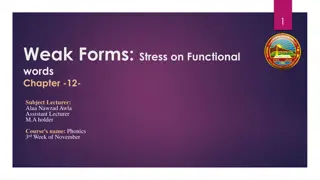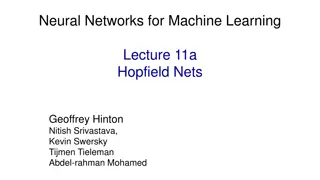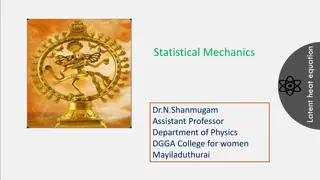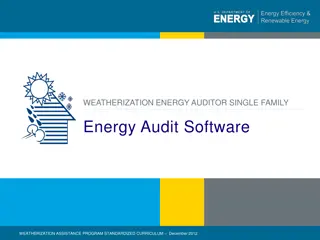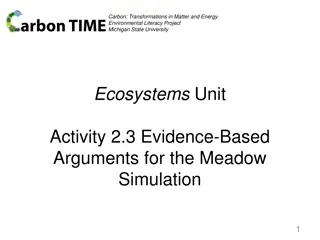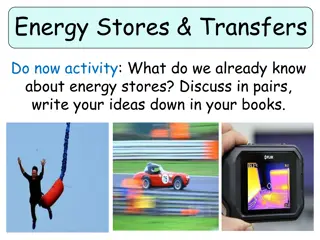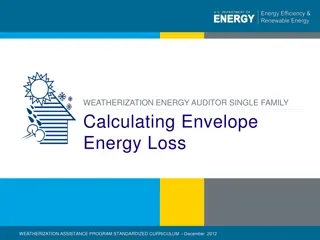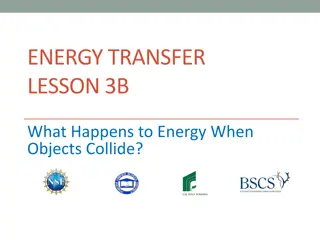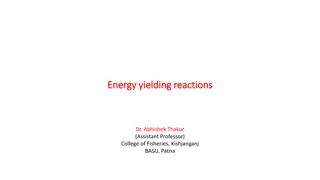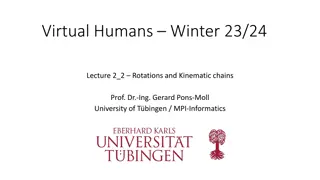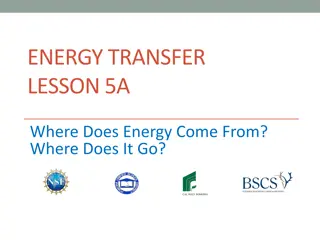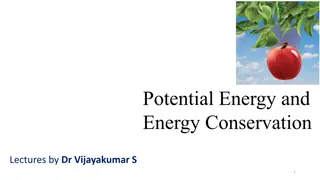Understanding Energy: Forms and Transformations
Energy is the ability to do work and is essential in various forms. This chapter explores kinetic and potential energy, gravitational potential energy, elastic potential energy, and different forms of energy like mechanical, thermal, chemical, electrical, electromagnetic, and nuclear. Learn how energy is stored, transferred, and transformed in different processes.
Download Presentation

Please find below an Image/Link to download the presentation.
The content on the website is provided AS IS for your information and personal use only. It may not be sold, licensed, or shared on other websites without obtaining consent from the author. Download presentation by click this link. If you encounter any issues during the download, it is possible that the publisher has removed the file from their server.
E N D
Presentation Transcript
PHYSICAL SCIENCE Chapter 15 Energy
15.1 ENERGY AND ITS FORMS Energy the ability to do work. Its transferred by a force moving an object through a distance. Work and energy closely related. Work the transfer of energy. Both measured in joules.
15.1 KINETIC ENERGY Many forms of energy can be classified as two types: 1) kinetic 2) potential Kinetic means moving, so kinetic energy is energy of motion. Kinetic energy depends on an object s mass and speed. KE = 1/2mv2
15.1 CALCULATING KE A 0.1kg bird is flying at a constant speed of 8.0 m/s. What is the bird s KE?
15.1 POTENTIAL ENERGY Energy that is stored as a result of position or shape. Musician plucks the string of a guitar. Energy is stored in the guitar string. Stored energy is converted to KE when the string vibrates. I pick a book up and hold it in the air. Is there PE? When is it converted to KE?
15.1GRAVITATIONAL PE This PE increases when you raise an object to a higher level.
15.1 GRAVITATIONAL PE PE = mgh Mass should be in kg Height should be in m What is g?
15.1 GRAVITATIONAL PE Suppose a diver is on top of a 10 m platform and has a mass of 50 kg. What is her PE relative to the ground?
15.1 ELASTIC PE Happens when something is stretched or compressed. Rubber bands and compressed air in a basketball are examples of elastic PE.
FORMS OF ENERGY The major forms of energy are: Mechanical energy energy associated with motion and position of objects. Sum of an object s KE and PE. Thermal energy total of PE and KE of an object s microscopic particles. Chemical energy energy stored in chemical bonds in compounds. Electrical energy energy associated with electrical charges. Electromagnetic energy form of energy that travels through space in the form of waves. Nuclear energy energy stored in atomic nuclei.
15.2 ENERGY CONVERSION AND CONSERVATION Energy can be converted from one form to another. We already saw this with PE and KE. Think of a meteor falling through the sky. The law of conservation of energy states that energy cannot be created or destroyed. What happens when you stop pedaling on a bike?
MOST COMMON ENERGY CONVERSIONS Probably would be gravitational PE being converted to KE as something falls. Let s look at a pendulum:
ENERGY CONVERSION CALCULATIONS Remember Mechanical energy = KE + PE Because of the law of conservation of energy: (KE + PE)beginning= (KE + PE)end
PROBLEM At a construction site, a 1.5 kg brick is dropped from rest and hits the ground with a speed of 26 m/s. Assuming air resistance can be ignored, calculate the gravitational potential energy of the brick before it was dropped.
ENERGY AND MASS If we were to continue on with all of this, we would see that Einstein s equation, E = mc2 says that energy and mass are equivalent and can be converted into each other. This is where it can get really fun!!! Atomic fission is based on this principle.
15.3 ENERGY RESOURCES What are nonrenewable energy resources? What are renewable energy resources?
EXAMPLES OF RENEWABLE ENERGY SOURCES Hydroelectric
GEOTHERMAL ENERGY The heat beneath the Earth s surface is used to generate electricity. Its nonpolluting, but it is not widely available.
OTHER SOURCES Hydrogen fuel cells Biomass energies Ethanol Biodiesel New types being considered all the time
REVIEW ASSIGNMENT Pick a form of alternative energy production we talked about (or one we didn t talk about) and write 250 words on how the energy is converted, the benefits of using it, and the disadvantages of using it at the present time.



